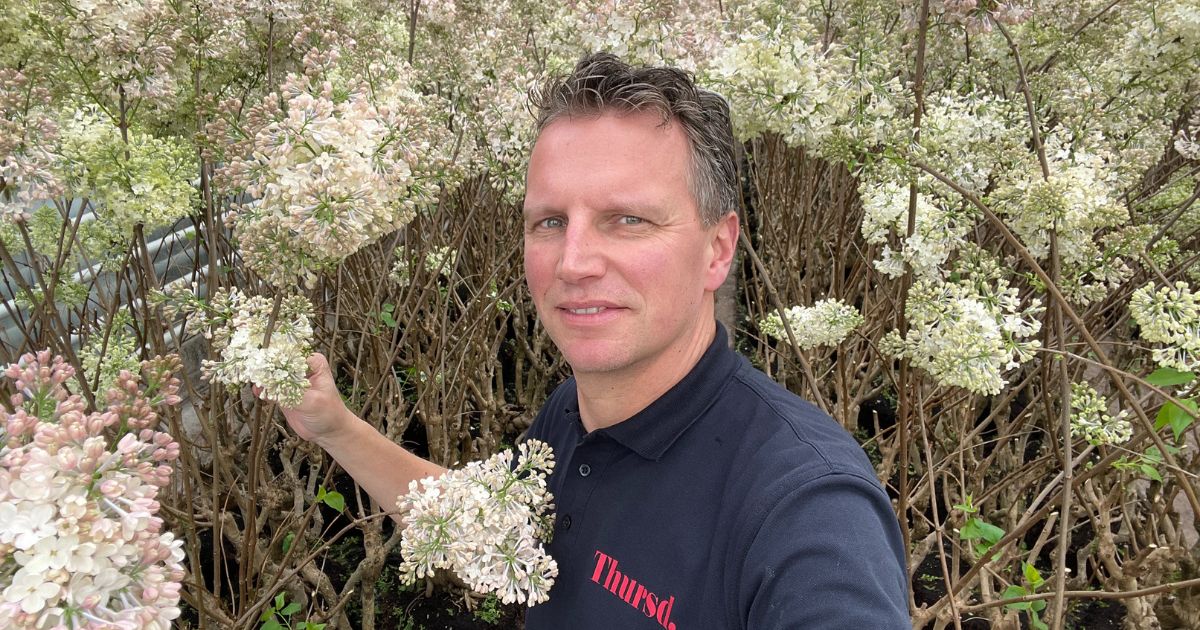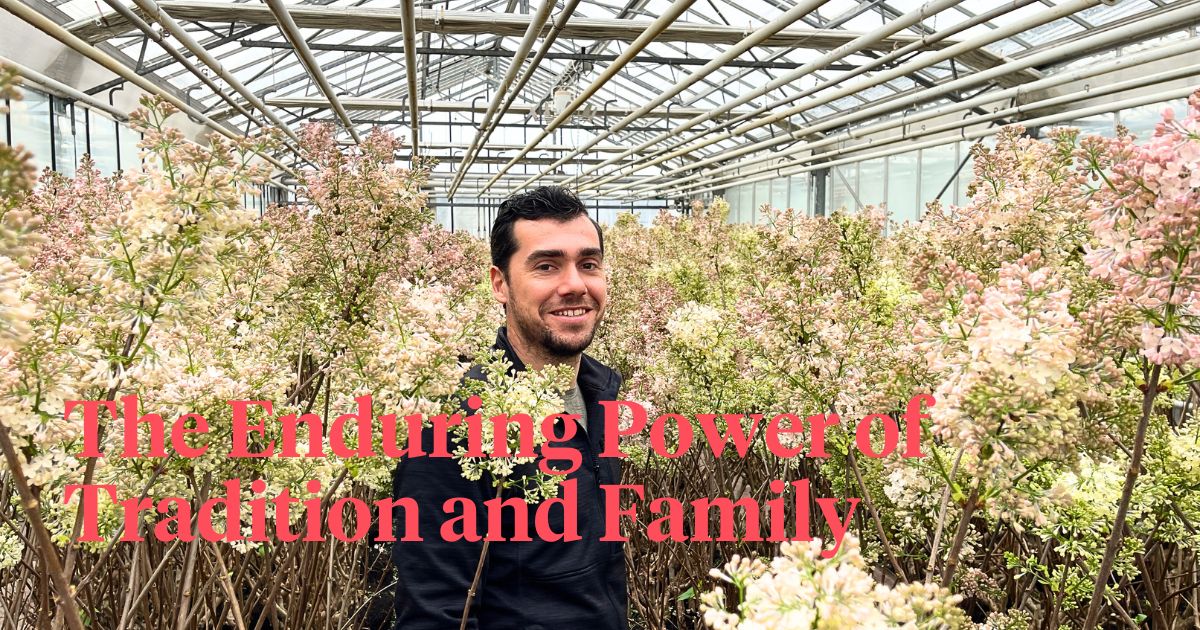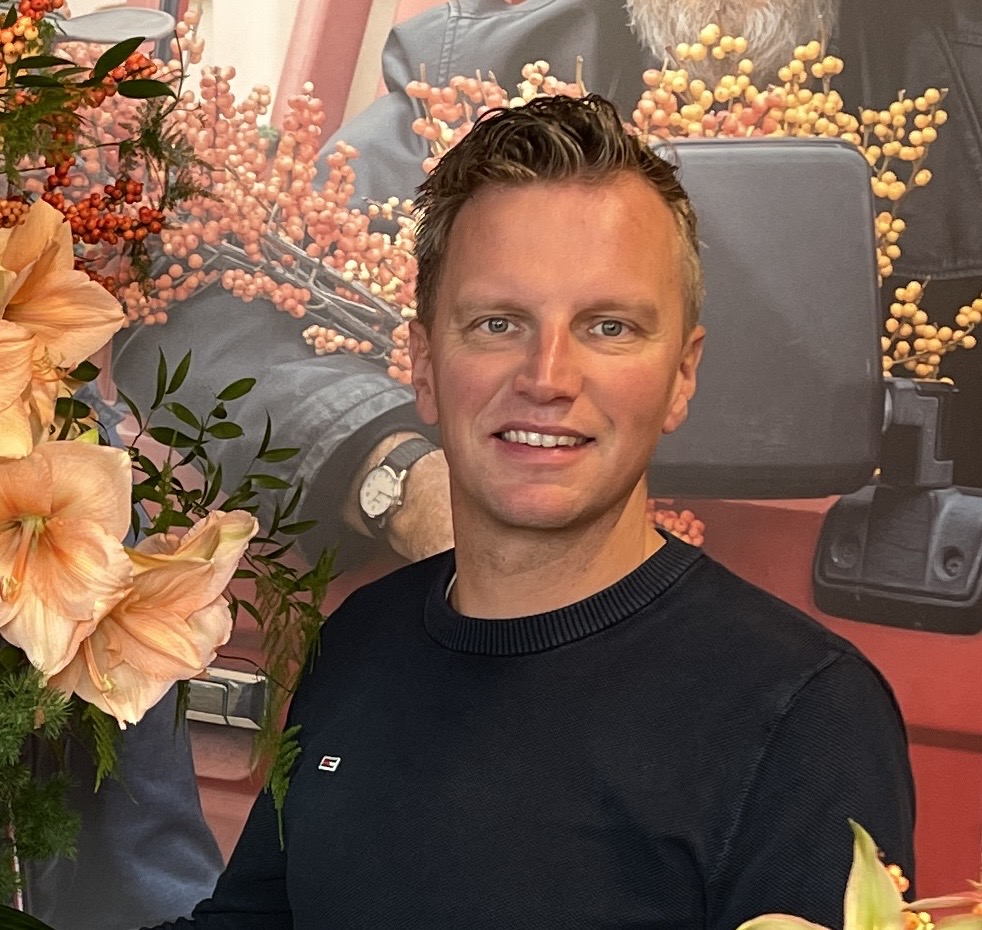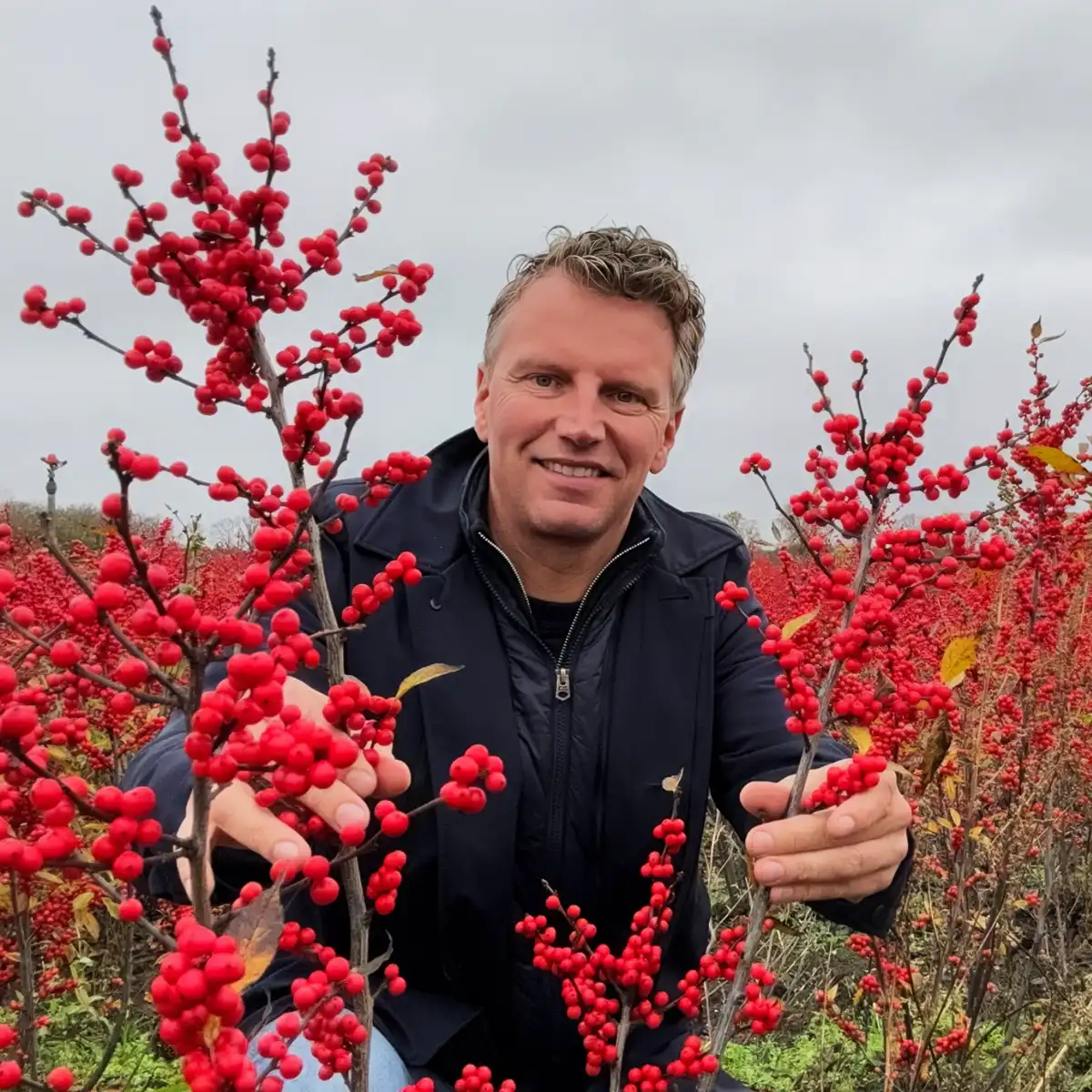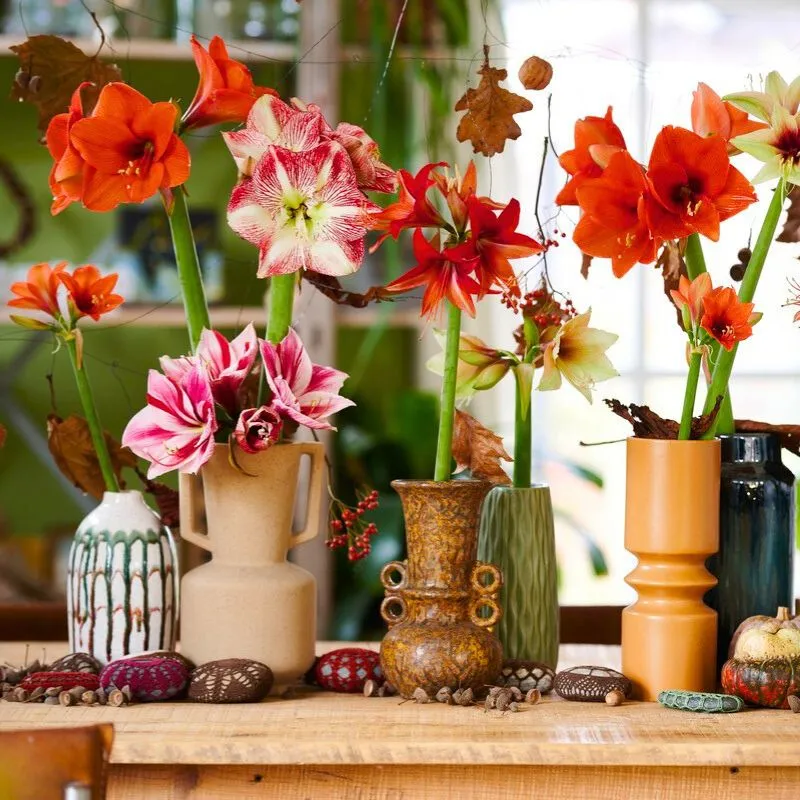Welcome again, flower enthusiasts! This week, I walked into the amazing world of Kramer Seringen (seringen is Dutch for lilacs). Are you joining me in this long read as I do an exploration of not only the cultivation of lilacs but also the history of one of the most cherished lilac nurseries, nestled in the heart of Aalsmeer, the Netherlands? Let's go!
Kramer Seringen Is Built of Generations and Generations
Rooted in history, Kramer Seringen traces its lineage back to the early 1600s, when the art of cultivating lilacs blossomed in the fertile lands of Aalsmeer. For centuries, the nursery has remained a family affair, passed down from father to son, uncle to nephew, and now, from grandfather Maarse to Kees Kramer.
It all began with Cornelis Dirk Arysz, whose pioneering spirit led him to establish roots at the end of the Uiterweg in Aalsmeer. From those humble beginnings, the Maarse family legacy took root, evolving through generations of dedicated lilac cultivation.
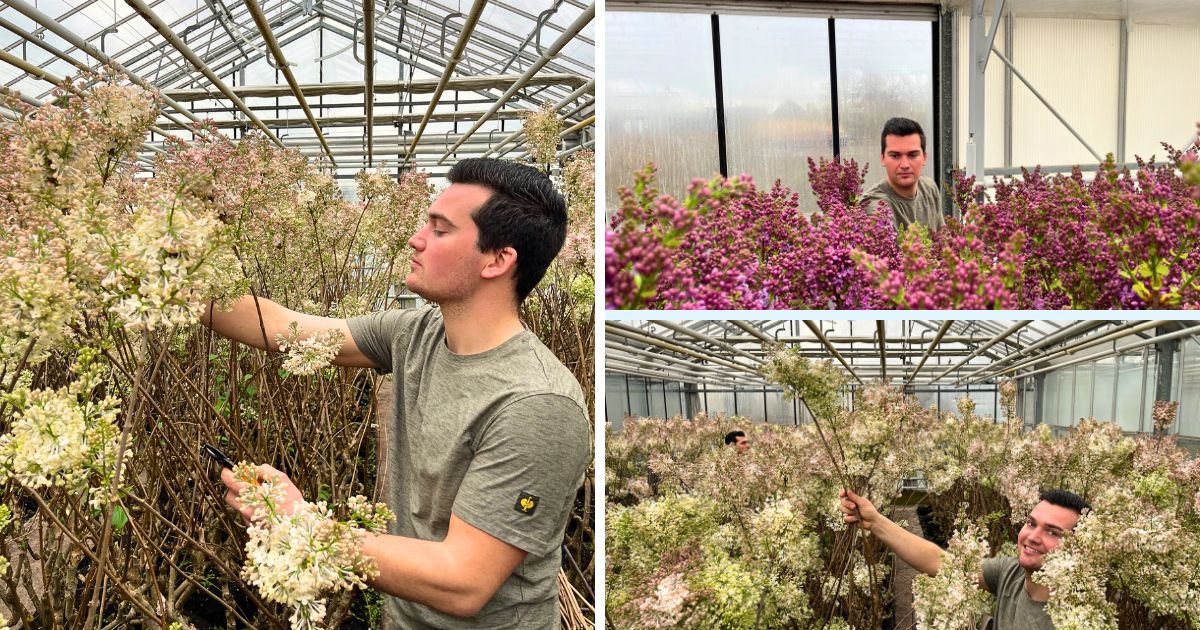
The Kramer Lilac Assortment
From early October to early June, our Lilacs are in the greenhouse, intending to supply daily through Royal Flora Holland under the name Kramer Lilacs. The assortment consists of:
- Syringa vulgaris Weissen Traum
- Syringa vulgaris Dark Koster
- Syringa vulgaris Mme Florent Stepman
- Syringa vulgaris Rhum von Horstenstein
- Syringa vulgaris Herman Eilers
- Syringa vulgaris White Wonder (mutant from Lila Wonder)
- Syringa vulgaris Lila Wonder (mutant from Dark Koster)
- Syringa hyacinthiflora Maiden Blush
What Are the People of the Kramer Nursery Specifically Proud of?
Last season, they were supplying the auction daily, so they are seen as a very reliable supplier. The supply is constant. Also, they are a family business, Menno is 30 years old, and with the nursery at the age of 20. Erik always knew he wanted to work in the nursery. Erik is technical, maintaining machines, among other things, while Menno is more focused on commerce, data, and planning. They do the growing together with their father Kees.
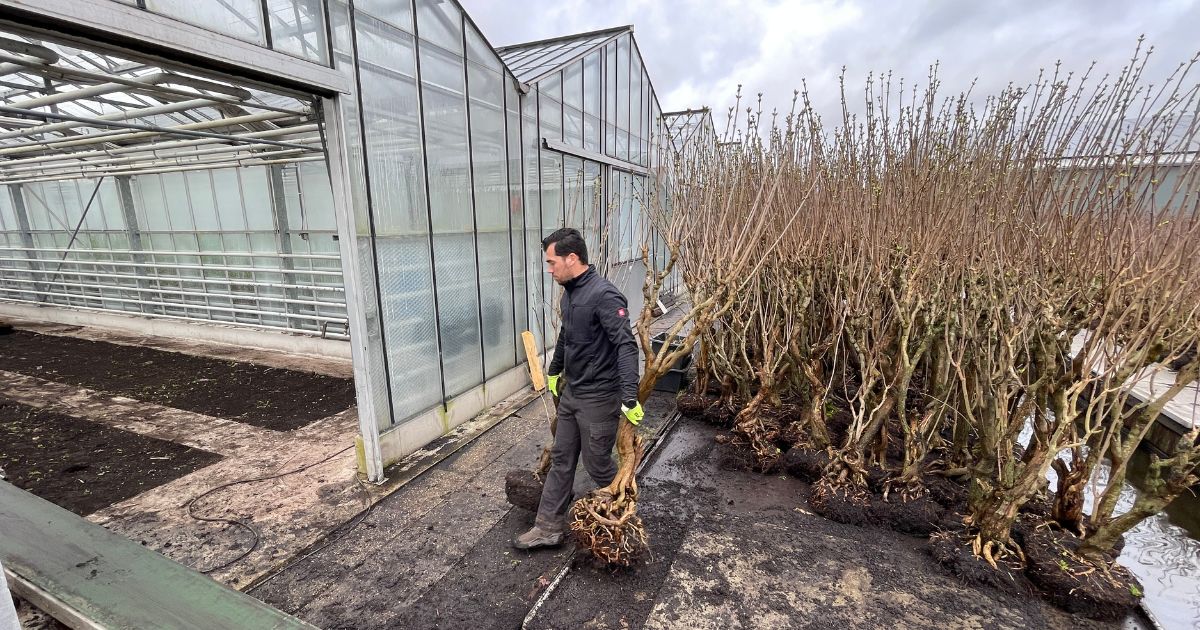
Lilac is a niche product; they dig the fields themselves, which makes them flexible. They don't need to schedule a labor company, making their work more efficient, and they have the heavy lilac bushes in their own hands. People from the trade who buy from them are very happy that they can offer a special product to their customers. Lilac cultivation has shrunk a lot in the last 10 years; 60 years ago, there were 120 growers near Aalsmeer, and now there are only 12. The brothers hope it doesn't become too small a product, as then they might be overlooked, and hopefully, it remains a stable product.
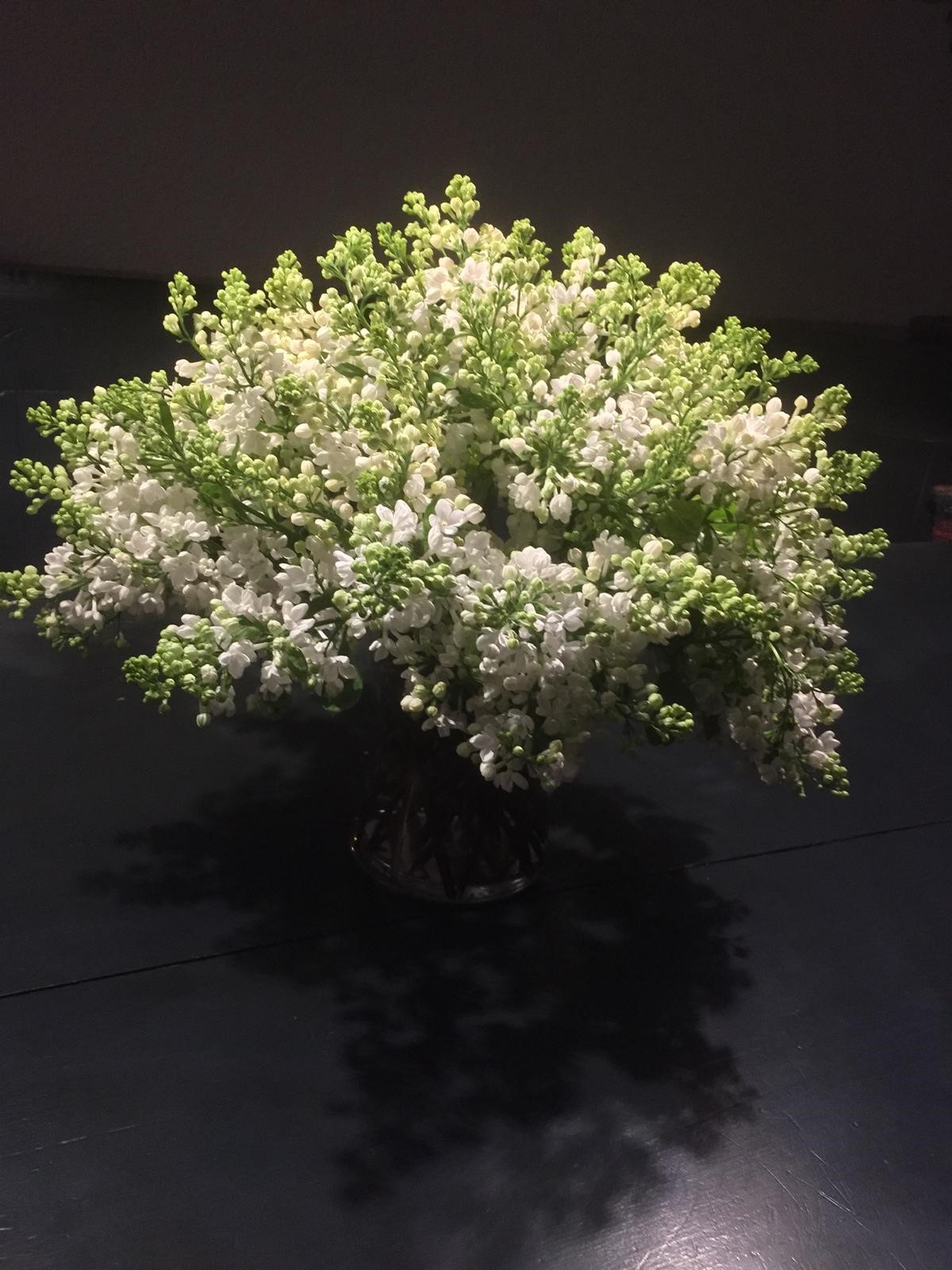
Their favorite lilac is the White Wonder. This Syringa has many more advantages over the well-known Stepman; it's more beautiful and technically better to cultivate. The challenges they face are mostly that it's hard to find. They buy bushes from retiring growers. Every year, they order 3,000 new plants from a laboratory.
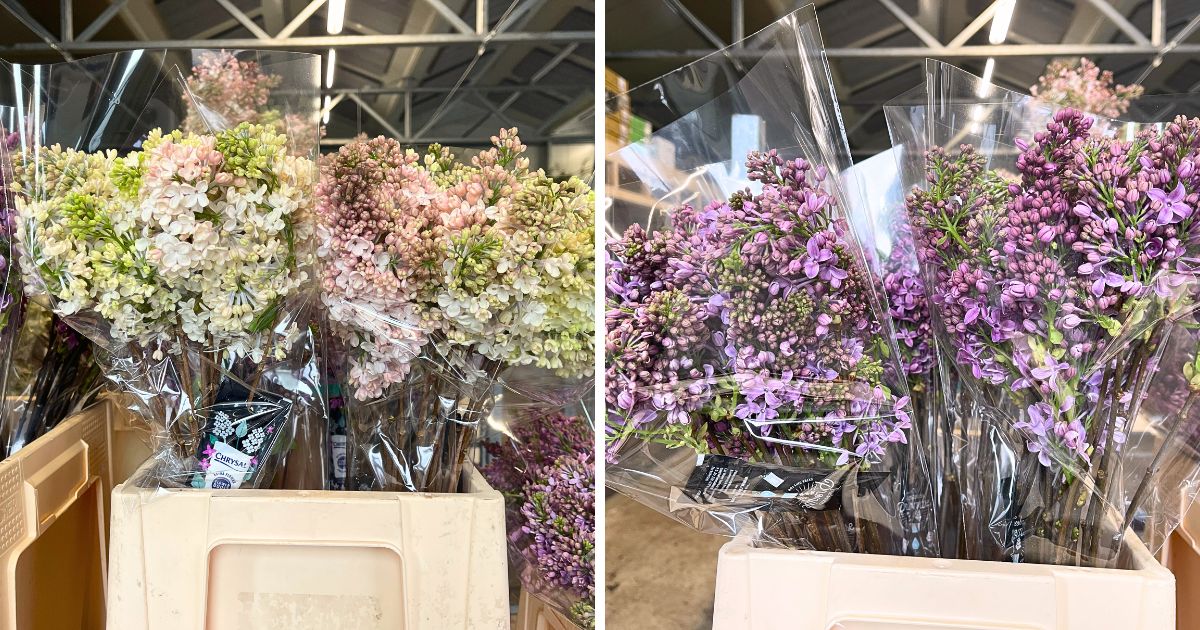
How Does the Cultivation of Lilacs Work?
The start of a lilac bush begins in the laboratory. Here, wild lilacs are propagated through tissue culture. A flow of the laboratory, and how this goes, is as below:
- June 2020 - Arrival: After a year of growth in the laboratory, the young wild lilacs arrive at the nursery. At this stage, they are no more than 10 cm tall.
- June 2020 - Planting out: The wild lilacs are planted close together to minimize space usage. There is approximately 20 cm between each plant.
- May 2022 - Grafting: After two years, the wild lilacs are grafted. The stem is cut to 15 cm, and the chosen cultivar is attached to it.
- May 2022 - Planting: After grafting, the bushes are replanted and follow the same cycle as all other Lilacs.
- January 2024 - First harvest: The first harvest (after 4 years) yields a maximum of 6 branches.
- January 2026 - Second harvest: The second harvest (after 6 years) yields a maximum of 10 branches.
- January 2028 - Third harvest: The third harvest (after 8 years) yields a maximum of 14 branches.
- January 2030 - Fourth harvest: The fourth harvest (after 10 years) yields a maximum of 18 branches. From now on, the bush can be fully productive.
The lilac cultivation process, aka the growing of the lilac cut flowers, goes as follows:
Lilac Cultivation Cycle:
- Field Preparation: Before bushes are brought to the fields, they need to be prepared. Every two years, fresh sediment (from the Westeinderplassen near Aalsmeer) or compost is applied to maintain the soil level. After leveling the sediment or compost, the soil is tilled to mix it and make it workable.
- March year 1 - Bushes Transport: After harvesting, the bushes are stored on empty land. Once the fields are tilled, they are transported there by boat so they are ready for planting.
- April year 1 - Planting Bushes: The bushes are planted in rows in the fields. Depending on their size, they are planted at the same distance apart. Holes are drilled by a machine for the lilacs to be placed in.
- May year 1 - Weed Control: To keep the fields clean from weeds, they are hoed as much as possible. A successful weeding depends on good weather conditions. Occasionally, spraying against weeds is necessary.
- July year 1 - Sprouting: Sprouting involves breaking off thin branches. As the lilac bush grows, around 50 new branches sprout. To save time during winter pruning, all thin branches are broken off in summer.
- December year 1 - Winter Pruning: During winter pruning, the bush is trimmed back to shape. All branches are cut off to create a bare bush, allowing for optimal growth in spring.
- April year 2 - Thinning: In the spring of the second year, the lilacs are thinned out. Most sprouts are removed, allowing the remaining ones to grow optimally. It's preferred to have 15 long branches rather than 30 short ones.
- May year 2 - Netting: After thinning, nets are placed over the bushes to protect young sprouts from wind and hail. The nets protect sprouts up to 20 cm until the branches are woody, which takes 2-3 weeks.
- June year 2 - Root Cutting: By June, the lilacs have grown enough branch length. The roots are cut to stop length growth and initiate bud formation. The timing of root cutting is crucial; too early results in shorter branches, while too late results in fewer flowers.
- September year 2 - Digging Up: Between August and October, the lilacs are dug up using a spade or a digging machine.
- October year 2 - Under Reed: To start the lilac season earlier, lilac bushes are 'darkened' under reed in batches of 500 bushes. After 5 weeks, the leaves have fallen from the branches, and they can be brought into the greenhouse.
- December year 2 - Storage: The bushes not placed under the reed are transported to storage in the fall. This is done to reduce the time filling the greenhouses in winter and spring because they are already close to the greenhouses.
- February 1st, year 2 - Greenhouse Entry: The lilac bushes are brought into the greenhouse in batches of up to 500 bushes (depending on size). They are transported into the greenhouse using conveyor belts, tracked vehicles, or by hand.
- February 8th, year 2 - Thinning: After 1-2 weeks in a warm greenhouse, the flowers are about 5 cm in size. Not only do the flower buds grow, but the leaves also grow (thinning). These are removed so that all nutrients go to the flowers, resulting in better quality.
- February 19th, year 2 - Harvesting: After 2-3 weeks in a warm greenhouse, the flowers are ripe enough to harvest. On average, a greenhouse is emptied in 4 days.
- March 1st, year 2 - Pruning: After harvesting, the bushes are pruned. They are thinned out, diseased branches are cut off, and unproductive bushes are replanted.
- Restart: After pruning the bushes, the cultivation cycle begins anew.
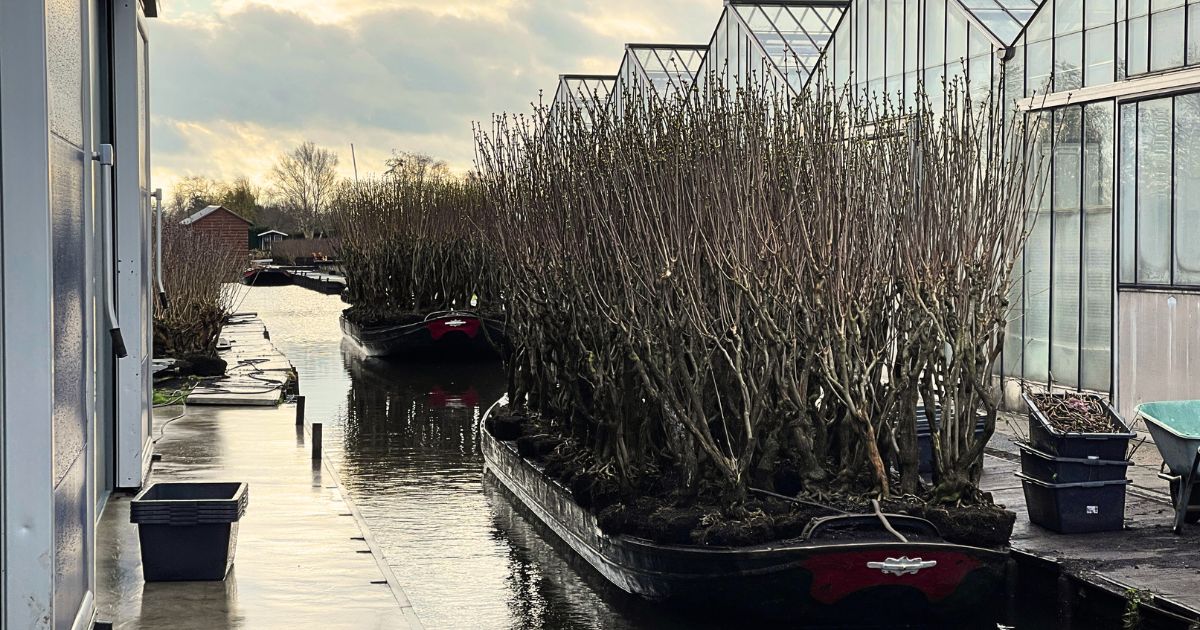
EXTRA: The History of the Company Kramer Seringen
The history of the company dates back to before 1600. The nursery has always remained in the family. It passed from father to son, from uncle to nephews, and from grandfather Maarse to grandson Kramer. It has always been located on the Uiterweg in Aalsmeer. Before 1600, Cornelis Dirk Arysz (died 1625) settled at the end of the Uiterweg in Aalsmeer. His father, Dirk Arysz (died before 1561), lived on the Westeinde. It is suspected that this was on the lakes there, called the 'Westeinderplassen', where a road used to run through (called the Dijksloot). All descendants have been located at the end of the Uiterweg to this day.
The Surname 'Maarse'
During that period, the surname Maarse did not yet exist. From that time on, the nursery was passed down from father to son. Around 1700, the first name Maarten was changed to the surname Meartsz. From 1750, Maertsz was changed to the surname Maarse (later various forms of Maars(s)e(n) emerged). These families were, among other things, tree growers, cattle breeders, and carpenters. Ancestor Willem Maarse (nickname: Willem de Koop, 1840-1879) himself was a merchant/barber, and had a brother Jan Maarse (1854-1934) who took over their father's nursery (Willem Maarse, 1810-1889). The youngest son, number 9 in Willem de Koop's family, also named Willem Maarse (1879-1963), was born in the year his father died. Willem Maarse (had 4 sons and a daughter), his brother Cornelis Maarse (1869-1951, had 1 daughter), both worked as employees for their Uncle Jan (childless) at the nursery.
Around 1920, Lilacs!
During that time, trees, shrubs, climbers, perennials, and bedding plants were extensively cultivated. In the archives, it can be read that around 1920, the lilac varieties Stepman and Späthen were sold as cut flowers. Because Uncle Jan had no children, the nursery was bequeathed to the nephews Willem Maarse and his brother Cornelis Maarse in 1935. Later, the 4 sons of Willem Maarse, who were already working at the nursery, continued the business. These brothers and ancestors traded under the name Fa. WD. Maarse and were trading nurserymen. Trade was mostly conducted from the nursery and traded at the Singel in Amsterdam, and was auctioned in Amsterdam and at the CAV.
VBA Aalsmeer - Now Known as RoyalFlora Holland
Around 1972, Fa. WD Maarse only became a member of VBA Aalsmeer, which is now known as Royal FloraHolland. During the period of the 4 brothers, besides Syringas, other plants such as Violas, bedding plants, Hydrangeas, Cyclamen, and Primulas were grown in, among other things, flat trays in the field and the greenhouse. Later, green plants were also added, including Hedera, Rhoicissus, and Papyrus.
From Maarse to Kramer
Cornelis Maarse, the longest-living of the 4 brothers, together with Geertje Venema, had two daughters: Aagje 1930 and Annie 1945. Aagje married Piet Kramer (1925-2011). Piet Kramer was a baker at Bakker Rodenburg until 1975 and then worked at his father-in-law's nursery at the age of 50, and then until his 65th birthday at his son Kees Kramer's nursery. After that, he retired, but he was still in the nursery every day. Grandfather Maarse long thought he had no successor until his grandson Kees, son of Aagje and Piet Kramer, decided to take over the nursery together with his wife Helmi in 1983 (Grandfather was then 72). Helmi is the daughter of farmer Gerrit Griffioen (1939-1990) and Corrie van Walbeek (1941) from Abcoude also completed RMTS (floriculture & floral design). Since 1983, the company has been called Fa. C. Kramer. Since then, the cultivation of lilacs has gradually expanded, and the cultivation of bedding and (flowering) plants has been stopped. Besides lilacs, approximately 20 years of Viburnum (snowballs) were grown, which came to an end in 2020. During the same period, Kees and Helmi had 3 children: Susan 1992, Menno 1993, and Erik 1998.
Menno and Erik
Suus found her work in home care. Menno skated passionately until he was 22. During that period, Menno obtained his gardening certificates in the evenings after the Johan Cruijff College. In 2021, alongside his work at the nursery, Menno completed his HBO study in Horticulture and Arable Farming in Dronten. Erik skated passionately until he was 16 and completed his vocational training in floriculture in 2018. Since 2018, Menno and Erik have been in the nursery and share the same passion for lilacs. After the arrival of Menno and Erik in the company, the company started to grow again. Currently, there are over 50,000 bushes in the fields that go into the greenhouse over two years (read: a two-year cultivation cycle). The lilac bushes are spread over 4 hectares of land. Most of the land is islands on the Westeinderplassen.
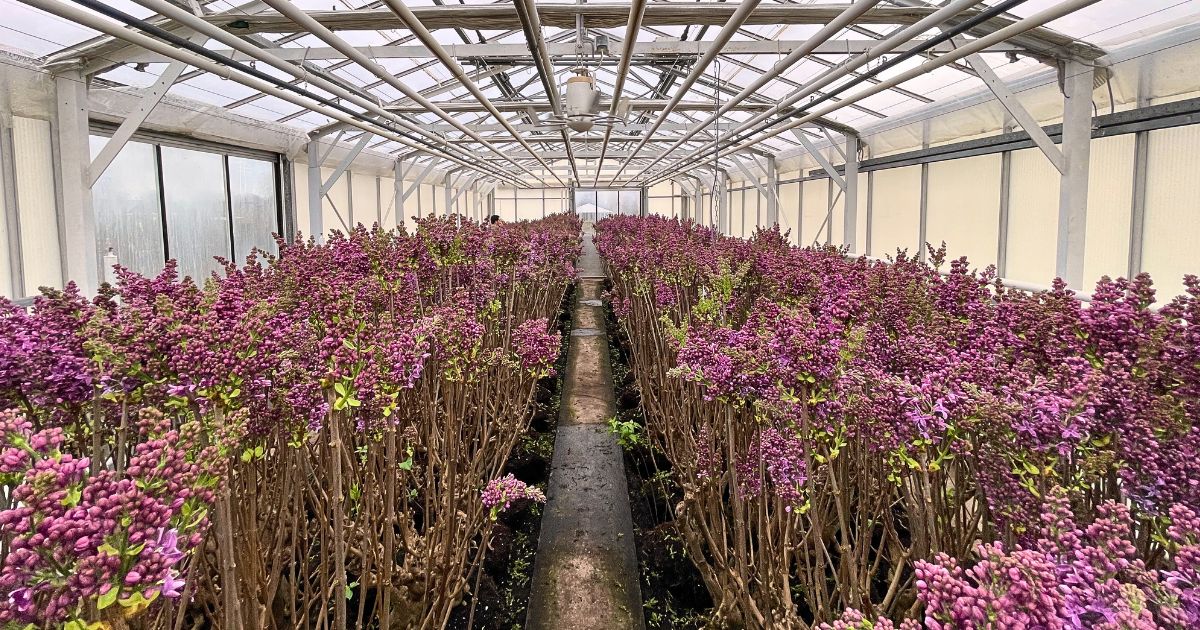
Lilac Production in Aalsmeer Is Like a Journey Through Time
The history of Kramer Seringen is a story of resilience and adaptation. From the vibrant trade in the bustling markets of Amsterdam to the modern era of auctioning at Royal FloraHolland, each chapter reflects the enduring spirit of the families who owned the lands.
Over the decades, the nursery witnessed the ebb and flow of floral trends, diversifying its offerings to include a myriad of flowers, from violas to hydrangeas. Yet, amidst the changing landscape, one constant remained—the commitment to lilac excellence.
As the growing expertise passed to the next generations, they began to redefine lilac cultivation for the modern era. With a blend of tradition and innovation, they expanded the nursery's offerings, specializing in the timeless beauty of lilacs. The nursery entered a new era of growth and prosperity.
As I drive back from my visit to Kramer Seringen, I am reminded of the enduring power of tradition, innovation, and familial love. Each lilac flower tells the story of dedication and craftsmanship, I am sure of that now. I hope the legacy of Kramer Seringen continues to flourish, inspiring generations to come with its amazing flowers.
